Wood dust is a common byproduct in wood production processes and poses various risks to workers’ health. The inhalation of wood dust particles can lead to respiratory issues, such as allergies, asthma, and even more severe conditions like chronic obstructive pulmonary disease (COPD). For instance, in a case study conducted at a furniture manufacturing facility, it was found that employees who were consistently exposed to high levels of wood dust developed respiratory symptoms over time. This highlights the importance of understanding wood preservation techniques and implementing proper safety measures in order to mitigate these potential hazards.
In addition to its impact on human health, wood dust also presents challenges in terms of preserving the quality and longevity of wooden products. When not properly managed, excess wood dust can accumulate within machinery or workspaces, leading to reduced efficiency and increased maintenance costs. Furthermore, the accumulation of fine particles can contribute to fire hazards if ignition sources are present. Thus, it becomes imperative for those involved in the wood production industry to be well-informed about effective methods of controlling and managing wood dust throughout all stages of production. By adhering to established guidelines and adopting appropriate safety protocols, both worker health and product integrity can be safeguarded while maximizing productivity.
Types of Wood Dust
Wood dust is a common byproduct in various woodworking processes, and it comes in different forms depending on the type of wood being used. Understanding the characteristics of these different types of wood dust is crucial for implementing appropriate safety measures in wood production. To illustrate this point, let us consider the case study of a furniture manufacturing company that primarily works with oak and pine.
Firstly, there are hardwoods such as oak and mahogany which produce fine to medium-sized particles when cut or sanded. These types of wood dust have the potential to become airborne easily due to their small size. In contrast, softwoods like pine generate larger particles that tend to settle more quickly. This distinction in particle sizes can significantly impact exposure levels and subsequently influence health risks associated with each type of wood dust.
Secondly, certain woods contain natural chemicals that can pose additional hazards when they become airborne as part of the wood dust. For instance, cedarwood contains naturally occurring oils that may cause allergic reactions in some individuals upon inhalation. Similarly, tropical woods like teak and rosewood can release toxic substances into the air when their dust is dispersed during sanding or cutting processes.
Lastly, it is essential to be aware of any potential contamination present within the wood materials before engaging in woodworking activities. Chemical treatments applied to preserve or enhance the appearance of lumber might result in hazardous emissions when exposed to sawdust. Moreover, if previous coatings or finishes were not properly removed prior to working with reclaimed wood, harmful chemicals could also be released into the surrounding environment.
To emphasize the importance of maintaining safety precautions while handling different types of wood dust, we present an emotional appeal:
- Respiratory diseases: Inhalation of certain types of wood dust has been linked to respiratory conditions such as asthma and bronchitis.
- Cancer risk: Prolonged exposure to specific carcinogenic compounds found in some varieties of wood dust can increase the risk of developing certain types of cancer.
- Skin irritation: Contact with certain types of wood dust may cause skin allergies, redness, and itching.
- Eye irritation: Exposure to fine particles of wood dust can lead to eye irritation and potentially more severe eye injuries.
To summarize, understanding the various types of wood dust is crucial for implementing effective safety measures in woodworking processes. The size and composition of wood particles, as well as any potential chemical contamination, play significant roles in determining the associated health risks.
Health Hazards of Wood Dust
In the previous section, we explored the various types of wood dust that are commonly encountered in wood production. Now, let’s delve into the potential health hazards associated with exposure to wood dust.
Wood dust is a complex mixture of fine particles generated during woodworking operations such as cutting, sanding, and shaping wood materials. These tiny particles can easily become airborne and pose a risk when inhaled or come into contact with skin or eyes. One example that illustrates the detrimental effects of wood dust exposure involves a group of furniture makers who were consistently exposed to high levels of sawdust without proper protective measures. Over time, many developed respiratory issues including chronic bronchitis and asthma.
To understand the gravity of these health hazards, here are some key points to consider:
- Respiratory ailments: Inhaling wood dust can lead to various respiratory problems such as coughing, wheezing, shortness of breath, and even lung cancer.
- Skin irritation: Direct contact with certain types of wood dust may cause dermatitis characterized by itching, redness, and inflammation.
- Eye irritation: Wood dust particles entering the eyes can cause irritation, tearing, and conjunctivitis.
- Combustibility: Certain types of wood dust have high flammability properties which increases fire risks in poorly controlled environments.
| Type | Health Risks |
|---|---|
| Oak | Respiratory issues; eye/skin irritation |
| Pine | Allergic reactions; respiratory ailments |
| MDF (Medium Density Fiberboard) | Lung cancer; nasal tumors |
| Walnut | Dermatitis; eye/skin irritation |
It is evident that different woods pose varying health risks, making it crucial for woodworkers and other individuals in the industry to be aware of the potential dangers associated with each type.
By implementing these precautions, workers can minimize their risk of developing occupational illnesses related to wood dust inhalation or contact.
Preventing Wood Dust Exposure
Health Hazards of Wood Dust and Preventing Exposure: A Holistic Approach
Wood dust, a byproduct of wood production processes, poses serious health risks to workers in the industry. In order to ensure their safety and well-being, it is crucial for employers to implement effective measures that not only mitigate exposure but also promote overall wood preservation practices. This section explores the various strategies and precautions that can be taken to prevent wood dust exposure in the workplace.
One case study highlights the importance of implementing preventative measures against wood dust exposure. In a manufacturing facility, where workers were routinely exposed to high levels of wood dust, several employees developed respiratory problems over time. Upon investigation, it was discovered that inadequate ventilation systems and insufficient personal protective equipment (PPE) were major contributing factors. By addressing these issues through improved engineering controls and proper use of PPE, the company successfully reduced the incidence of respiratory illnesses among its workforce.
To effectively minimize wood dust exposure, consider implementing the following precautionary measures:
- Regularly inspect and maintain machinery: Ensuring that all woodworking machinery is properly maintained reduces the generation and dispersion of wood particles.
- Implement local exhaust ventilation (LEV): LEV systems help capture airborne contaminants at their source before they spread throughout the workspace.
- Establish designated clean-up procedures: Create clear guidelines on how to safely remove accumulated wood dust from work areas to prevent re-circulation or accidental inhalation.
- Provide comprehensive training programs: Educate employees about the hazards associated with wood dust exposure, as well as safe handling techniques and proper usage of PPE.
Table 1 provides an overview of common health effects arising from prolonged exposure to wood dust:
| Health Effects | Symptoms |
|---|---|
| Respiratory Issues | Coughing, wheezing, shortness of breath |
| Allergic Reactions | Skin rashes, itching, nasal congestion |
| Occupational Asthma | Chest tightness, difficulty breathing, recurring cough |
| Nasal and Sinus Cancer | Chronic sinusitis, persistent nasal congestion |
It is crucial for employers to prioritize the safety of their workers by implementing a comprehensive approach that combines engineering controls, administrative measures, and proper training. By doing so, companies can significantly reduce the risk of wood dust exposure-related health issues among their workforce.
[Transition sentence] Moving forward, let us explore how Personal Protective Equipment (PPE) plays a vital role in safeguarding workers from potential harm caused by wood dust exposure.
Personal Protective Equipment (PPE)
Wood dust poses a significant health risk to workers in the wood production industry. In order to safeguard their well-being, it is imperative to implement effective measures for preventing wood dust exposure. One such measure is the use of personal protective equipment (PPE), which serves as a crucial barrier between workers and harmful airborne particulates.
To illustrate the importance of PPE, let us consider an example: Imagine a woodworking factory where employees are engaged in sanding and cutting wooden boards without any protective gear. Over time, these workers would inhale substantial amounts of wood dust, leading to respiratory ailments such as asthma or chronic bronchitis. However, by equipping them with appropriate PPE like respirators and goggles, their exposure to hazardous particles can be minimized significantly.
When it comes to selecting suitable PPE for woodworkers, several factors ought to be taken into account:
- Type of task: Different tasks may require specific types of protection. For instance, individuals involved in sawing operations should wear face shields along with respiratory masks due to increased risks associated with flying debris.
- Fit and comfort: Ill-fitting PPE not only reduces its effectiveness but also causes discomfort for the wearer, potentially discouraging compliance. Therefore, ensuring that the equipment fits properly and does not hinder movement is paramount.
- Maintenance and replacement: Regular inspection and maintenance of PPE are essential for prolonged efficacy. Additionally, timely replacement is necessary when items become damaged or worn out.
- Training and awareness: Proper training on how to correctly use and maintain PPE must be provided to all employees. This education plays a vital role in fostering a safety culture within the workplace.
By implementing comprehensive preventive strategies like proper ventilation systems combined with diligent adherence to wearing recommended PPE during woodworking operations, employers can effectively ensure the reduction of wood dust exposure risks among their workforce.
Next Section: Wood Dust Extraction Systems
Wood Dust Extraction Systems
Wood dust extraction systems play a crucial role in ensuring the safety and health of workers involved in wood production. These systems are designed to remove wood dust particles from the air, minimizing exposure and reducing the risk of respiratory issues. One notable example is the case of a woodworking factory that implemented an efficient wood dust extraction system, resulting in a significant decrease in reported cases of respiratory illnesses among employees.
To effectively control wood dust emissions, several key elements should be considered when designing and implementing an extraction system:
-
Capture Hoods: Properly positioned capture hoods near cutting, sanding, and routing equipment can efficiently collect airborne wood dust at its source. By capturing the dust before it disperses into the workspace, these hoods prevent accumulation on surfaces and minimize inhalation risks for workers.
-
Ductwork: Well-designed ductwork with smooth internal surfaces ensures optimal airflow throughout the system. The use of appropriate diameter sizes and minimal bends reduces resistance to airflow, maintaining consistent suction power across all workstations.
-
Filtration Units: High-quality filtration units equipped with suitable filters are essential components of wood dust extraction systems. Filters must have sufficient capacity to trap fine particulate matter effectively without compromising airflow efficiency. Regular maintenance and replacement ensure their continued effectiveness.
-
Waste Disposal: A reliable waste disposal mechanism such as collection bins or bags allows for safe removal of collected wood dust debris from the workplace environment. Proper containment prevents re-entry into the air during disposal procedures.
Implementing effective wood dust extraction systems not only protects worker health but also promotes overall productivity by maintaining clean working conditions free from hazardous particle buildup.
Moving forward to our next section about “Regulations and Safety Standards,” it is important to understand how governmental regulations contribute significantly to improving workplace safety measures surrounding wood production processes
Regulations and Safety Standards
Wood dust extraction systems play a crucial role in maintaining the safety and well-being of workers in wood production facilities. These systems are designed to remove hazardous wood dust particles from the air, reducing the risk of respiratory problems and improving overall air quality.
For instance, let’s consider a hypothetical case study of a woodworking workshop that did not have an effective dust extraction system in place. Without proper ventilation or filtration measures, fine wood dust particles would accumulate over time, creating potential health hazards for employees. Workers could develop respiratory illnesses such as asthma or chronic bronchitis due to prolonged exposure to high concentrations of wood dust.
To mitigate these risks effectively, it is essential for wood production facilities to implement robust wood dust extraction systems. Here are some key considerations when choosing and operating these systems:
- Capture Efficiency: The effectiveness of a wood dust extraction system depends on its ability to capture airborne particles efficiently. High-performance exhaust hoods with adjustable airflow can help ensure optimal capture efficiency.
- Filtration System: A reliable filtration system is vital for trapping and removing fine particulate matter from the extracted air. HEPA (High-Efficiency Particulate Air) filters are commonly used in industrial settings due to their excellent particle retention capabilities.
- Regular Maintenance: To ensure continued performance, regular maintenance and cleaning of the extraction system components are necessary. This includes inspecting ductwork, replacing filters when needed, and keeping fans functioning optimally.
- Employee Training: Proper training should be provided to all personnel working around the wood dust extraction system. Employees must understand how the system works, including safe operation practices and emergency procedures.
By implementing efficient wood dust extraction systems and adhering to best practices, employers demonstrate their commitment to worker safety while also ensuring compliance with regulations set by relevant authorities.
| Regulation/Standard | Description | Purpose |
|---|---|---|
| OSHA Standards | Occupational Safety and Health Administration regulations | Set minimum requirements for ensuring workplace safety regarding wood dust exposure |
| NFPA 664 | National Fire Protection Association standard for wood processing plants | Focuses on fire prevention and protection measures specific to the woodworking industry |
| EPA Clean Air Act | Environmental Protection Agency regulation | Aims to protect air quality by regulating emissions from various industrial activities, including woodworking |
In conclusion, implementing effective wood dust extraction systems is essential in promoting a safe working environment within wood production facilities. By capturing hazardous particles at their source and effectively filtering the extracted air, these systems significantly reduce the risk of respiratory illnesses among workers. Compliance with relevant safety standards and regular maintenance are crucial factors that contribute to the overall effectiveness of such systems.

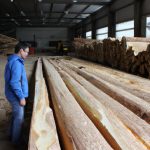
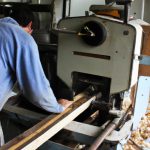
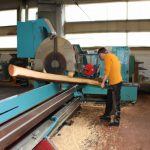

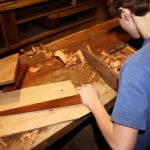
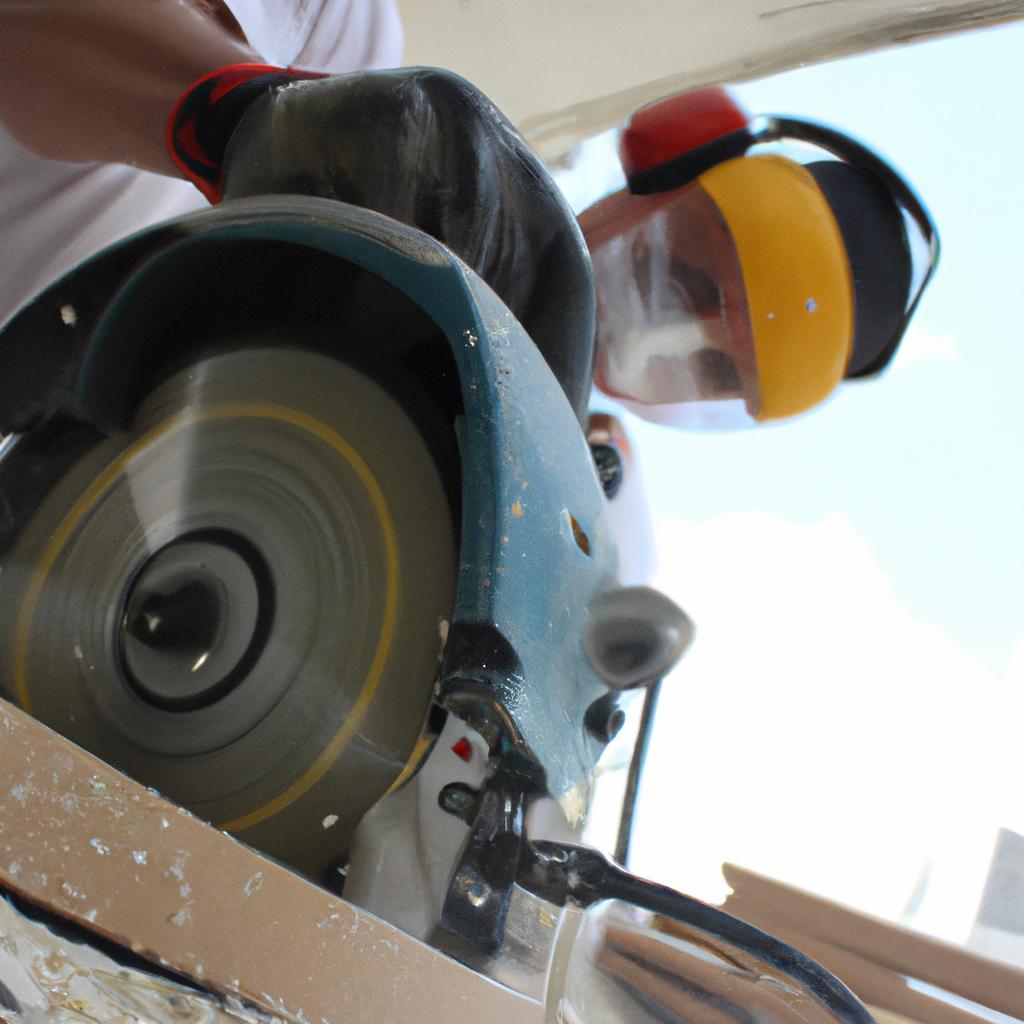
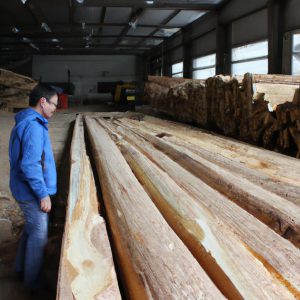
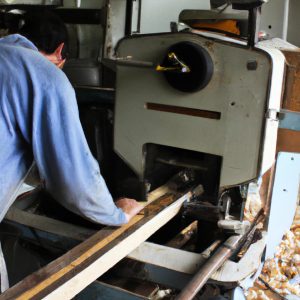
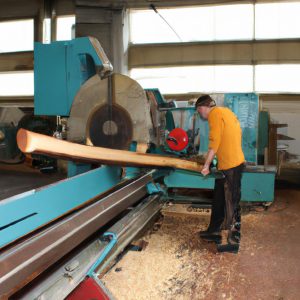
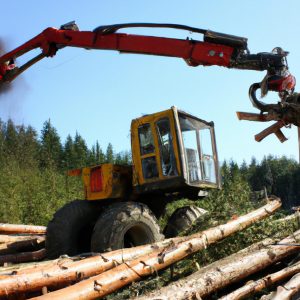
More Stories
Wood Offcuts: a Guide to Preserving and Maximizing Wood Production Efficiency
Wood Chips: An Essential Component for Wood Production and Preservation
Bark in Wood Production: Wood Preservation